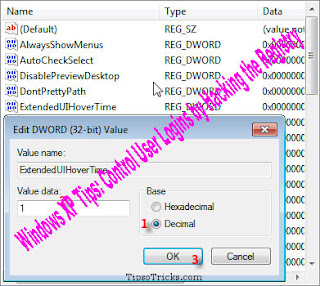To control logon options, run the Registry Editor [Hack #83] and go to the HKEY_LOCAL_MACHINE\SOFTWARE\Microsoft\Windows NT\CurrentVersion Winlogon subkey, which contains a variety of logon settings (as well as some settings not having to do directly with logons). Following are the most important values you can edit to customize logons.
DontDisplayLastUserName This setting lets you control how the system logon dialog box is used. If this String value is present and set to 1, all users will have to enter both their username and password to log on. If the value is 0, the name of the last user to log on will be displayed in the system logon dialog box.
DefaultUserName This String value contains the name of the last user who logged on. It will be
displayed only if the DontDisplayLastUserName value is not present or is set to 0.
LegalNoticeCaption and LegalNoticeText// Already discussed PasswordExpiryWarning This DWORD value lets you display a warning message to users a certain number of days before their passwords are set to expire. It lets you determine how many days ahead of time the warning should be issued. To edit the value, click the decimal button and enter the number of days.
ShutdownWithoutLogon This String value enables or disables a button on the XP logon dialog box that lets the system shut down. A value of 1 enables the button (so that it is shown); a value of 0
disables the button (so that it is not shown).
Shell It determines the shellthe user interfacethat will be used by XP.The default is Explorer.exe, but it can be another shell as wellfor example, the Program Manager from older Windows versions. Type in the name of the program; for example, Progman.exe for the Program Manager, or Taskman.exe for the Task Manager.
AutoRestartShell This DWORD value doesn't have to do with logons either, but it's another good one to
know. It sets whether to automatically restart the Windows shell if the shell crashes. A value of 1 automatically restarts the shell. A value of 0 tells XP not to restart the shell, forcing you to log off and then back on again to restart it.
"Windows XP Tips: Control User Logins by Hacking the Registry"
Reference : techpraveen.com












0Awesome Comments!